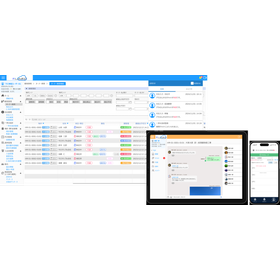We are now able to carry out various responses ahead of schedule with plenty of flexibility! Let me introduce some case studies.
We would like to introduce a case of implementing the lightning and weather information system "Lightning Scope Plus" at Biwako Valley. The summit is a place where the weather can change rapidly. To ensure the safety of our customers, it is essential to reliably collect lightning information, make timely assessments of the situation, and take proactive safety measures. Previously, responses were based on the visibility and audibility of lightning, leading to a chaotic approach. After introducing this product, it became possible to obtain accurate lightning information in advance, allowing all actions to be carried out with ample time and preparation. [Before Product Implementation] - Customer announcements and various actions, such as turning off equipment, were only taken after lightning was visible or audible. - Frequent use of last resort measures (such as stopping the gondola or evacuating customers from the summit) could lead to disappointment for customers who traveled from afar. *For more details, please refer to the PDF document or feel free to contact us.
Inquire About This Product
basic information
[After Product Introduction] ■ Various responses can now be carried out ahead of schedule with ample time. ■ Important decisions, such as whether to stop the cable car or whether to evacuate customers, can now be made based on solid evidence. ■ Thunderstorm conditions several dozen kilometers away can be recognized on the computer screen. *For more details, please refer to the PDF document or feel free to contact us.
Price range
Delivery Time
Applications/Examples of results
For more details, please refer to the PDF document or feel free to contact us.
catalog(2)
Download All CatalogsCompany information
Franklin Japan has been operating the Japan Lightning Detection Network (JLDN), the first and only nationwide lightning observation network in Japan, since October 1998. JLDN networks sensors installed across the country and utilizes accurate time information sent from GPS to observe the location, time, and current value of lightning strikes. The observation accuracy of JLDN boasts a capture rate of over 90% within its coverage area, with a location error of less than 500 meters, making it arguably the best lightning observation network in the world currently available. The observed lightning strike data is used in real-time for power management in factories, maintenance of networks, and protection of human life in outdoor sports.

![[Case Study] Biwako Valley](https://image.www.ipros.com/public/catalog/image/01/019/463583/IPROS09787562645186567266.jpeg?w=120&h=170)


![[Case Study] Mitsubishi Heavy Industries, Ltd. Nagoya Guidance and Propulsion Systems Manufacturing Division](https://image.www.ipros.com/public/product/image/268/2000444080/IPROS06318644685474667695.png?w=280&h=280)
![[Case Study] Japan Display Inc. Ishikawa Factory](https://image.www.ipros.com/public/product/image/5f7/2000444061/IPROS11744789214460545111.png?w=280&h=280)


![Cadmium concentration in rice - Simple measurement kit [for sale]](https://image.www.ipros.com/public/product/image/42a/2001516322/IPROS157372938992547760.png?w=280&h=280)


